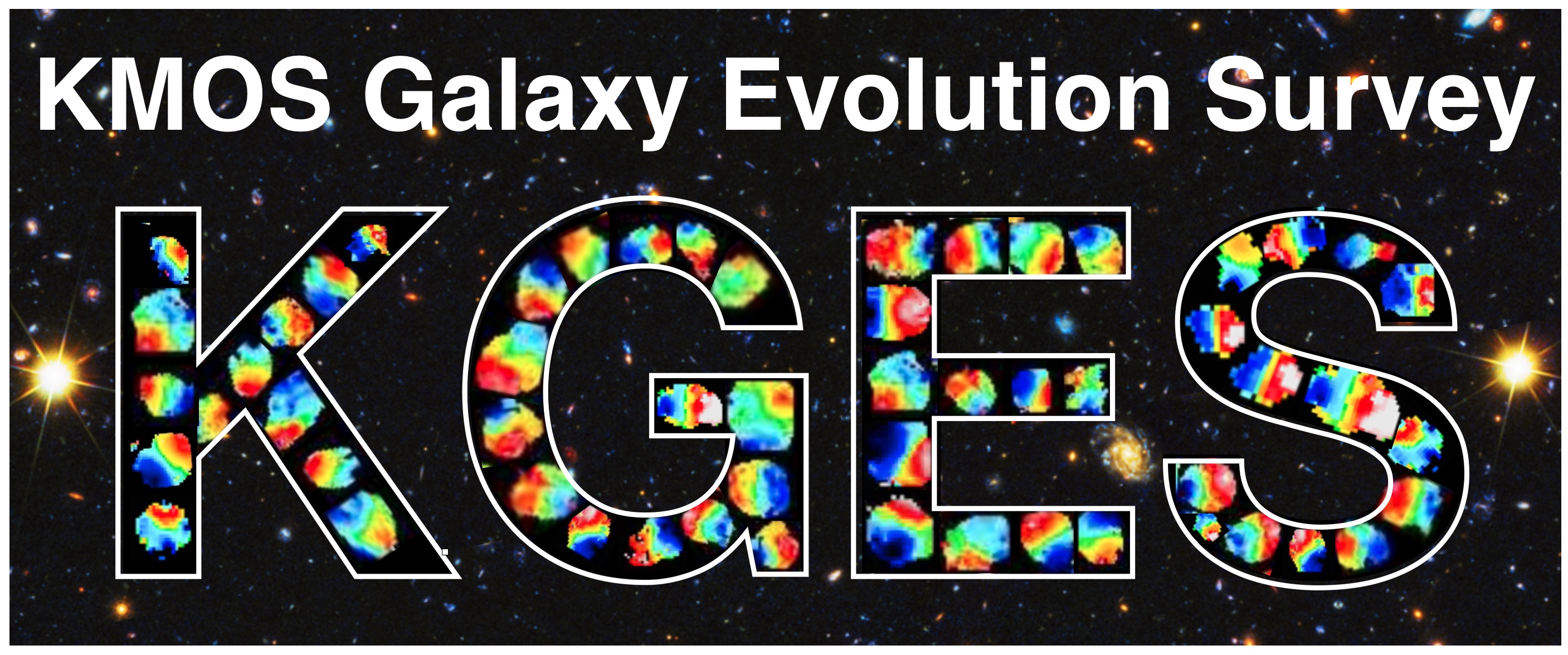KMOS Galaxy Evolution Survey (KGES)

The Hubble sequence of galaxy morphologies appears to follow a sequence of increasing angular momentum. Observations of high-redshift galaxies suggest that around z~1.5, the spirals and spheroids emerge from the clumpy, irregular galaxies. This is the epoch when the Hubble sequence begins to emerge. Numerical simulations have attempted to understand how the increasing angular momentum of the baryons within disks causes this transformation, and which physical processes are responsible for crystallising the Hubble morphology sequence.
The KMOS Galaxy Evolution Survey is a 26.5 night Durham-led project, comprising of a sample of 300 mass selected star forming galaxies at z~1.5 in the ECDFS, UDS and COSMOS fields. The survey aims to measure the evolution of galaxy dynamics and understand relationships between the distribution of angular momentum and morphology in high redshift emission line galaxies. The primary goals of the survey are to measure (i) how the dynamics of the first galactic disks form, settle and evolve, (ii) how the growing angular momentum of galaxy disks defines the formation of the Hubble sequence; (iii) how and where turbulence is generated and dissipated; (iv) the energetics of starburst driven feedback.
A list of papers related to KGES can be found here
The KGES project is run in parallel with the KMOS AGN Survey at High-z (KASHz) which is led by Dave Alexander. First results from the KASHz program can be found in Harrison et al. 2016
The velocity maps of ~300 KGES galaxies, distributed in the SFR versus stellar mass plane.
